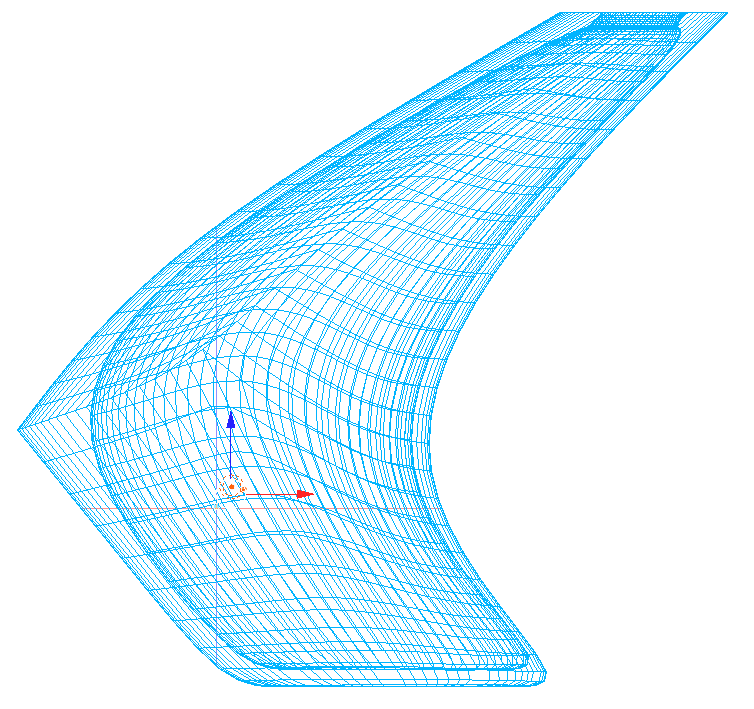
Torn Vase Porcelain with Teal Glaze
Peter Biddulph www.ceramicdesign.org
Brief overview of History and Development of Ceramics
The Raw Material: Clay
Clay is an alumina silicate with the formula Al2O3 2SiO2 2H2O, naturally occuring and also formulated to ensure consistency.
The silica in the clay melts in the kiln to form a glass in a process known as vitrification, which results in non-porous ware.
Firing and Temperature
Prior to the development of kilns, pots were fired in pits and bonfires; temperatures of up to 1,000°C could be achieved. However, the clay did not fully vitrify so the vessels would not hold liquids unless sealed in some way.
Early Civilisations Utilising Pottery
Earliest pottery vessels discovered in Xianren Cave in Jiangxi, China date back to 20,000 BP. Pottery Fragment.
The Jomon (c. 14,000–300 BCE) in Japan created vessels and sculpture
This early pottery was probably fired to less than 900°C. To achieve stoneware temperatures of 1280°C a (wood fired) kiln was required
In such kilns vitrification of the clay body occurs and non-porous ware may be made.
Porcelain
Porcelain is a strong and durable material, it is white and translucent when fine and fired to 1280°C.
Discovered in China in the early 10th century AD, millions of porcelain items were exported to Europe in subsequent centuries from Jingdezhen and other kiln sites and displayed in rooms similar to this Chinese porcelain. It took several centuries before the Europeans learned how to make a true porcelain.
Overview of Process of Stoneware (1280°C) Firing
- Finished clay object is left to become bone dry.
- First firing to bisque (1000°C).
- Glaze is applied to bisqued ware.
- Second Firing to stoneware (1280°C).

Seismic 2 Porcelain Platter with Teal Glaze
My Studio Practice and Teaching
In 2004 I undertook a two year course in ceramics. In the second year for my first exhibition I produced vol_Luminous, which was exhibited in 'Design Excellence in Queensland' at the Queensland Art Gallery in June 2006.
Following vol_Luminous I explored 3D modelling software and rapid prototyping technologies to slipcast geometrically precise yet organic looking forms. I used Southern Ice porcelain for its whiteness, translucency and response to colour and glaze.
The first series consisted of five sculptural works entitled Biomimesis.

This was followed by flasks and cups, which were awarded an Honorable Mention in an international ceramics competition, Mino, Japan 2011. These works were also selected for the London Design Festival.
The second series of flasks and cups won the Best of Show award in the Rotary Arts Spectacular, Brisbane 2013.
Similar works inlcude the Hybrid Flasks.
Teaching
Inspiration from many sources: natural world, design and architecture.
Ikebana, like ceramics, is a 3 Dimensional discipline and requires consideration not only of the materials and composition, but also social and physical contexts including the occasion, intended audience and purpose, the location and interplay of light, with the practice often being as important as the outcome.
Aesthetics play an important role and may be culturally determined - while a blemish-free glazed surface or only fresh flowers may be expected by some audiences, those familiar with other aesthetic values may appreciate the imperfect, the decayed, the patina of time, as the following examples illustrate.
Nakaya Fountain Pen Naka-ai Negoro Shiro-tamenuri
Display in Sogetsu Stone Garden
I particularly enjoy Sogetsu's innovative approach to ikebana, which, as in ceramics, means not always looking at what has gone before and taking a wider, more multi-disciplinary view.
Innovation and Preconceived Ideas
UQ workshops on construction using clay for architecture students. Students not told of purpose of project (to design a pavilion) so the focus would be on construction and process rather than preconceived ideas about the product, i.e. what a pavilion should look like.
BIA closed slab built forms - inspiration from other disciplines.
It can be a challenge to overcome preconceived ideas about what a pot, a building or an ikebana arrangement should look like.
In my practice I mostly create work that is functional, but may also be enjoyed as sculpture. I enjoy it when my work is used and interpreted in ways I could not have imagined. Ikebana Vessels and Arrangements.
Recent Work
More recently, I have been exploring more complex thrown and handbuilt forms.
Double walled vessels unglazed, iron-rich clays.
Double walled vessels, inverted, porcelain.
Spherical Vases unglazed, textured coarse clays.
Spherical Vases porcelain.
In February this year I exhibited a new body of work consisting of altered thrown forms and hand built vessels.
In recent years I have become increasingly interested in Ikebana and the following vessels may be suitable for ikebana:
The Strata series
Dark Matter
Aurora
Spherical Vases
Cascade Vases
Porcelain with Teal Glaze
Double Walled Vessels
Ikebana Arrangements without Water
The exhibition at the Sogetsu kaikan in Tokyo Ikebana without Water featured some very interesting arrangements. However, I was somewhat alarmed to see that there were no containers!
Exhibition April 2021
Some of my work will be in the BIA Members' Exhibition from Friday 26 March to Friday 9 April. Details on the BIA website.